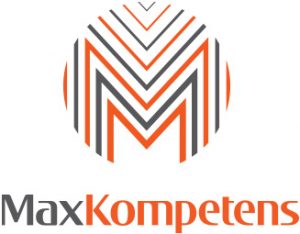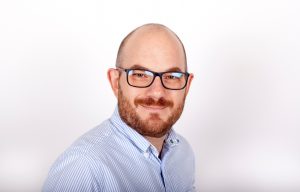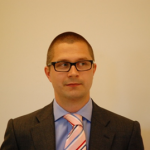Next Generation of Fast, Continuous and Lean Software Development
13th October 9-12:30, at Icon, Växjö or Online via Zoom
Presentation Material
Continuous Everything – Faster or Better or Both – Erik Klotins
Abstract: Most have heard of CI/CD as an approach to continuous and streamlined software deliveries. However, few have realized that achieving the full potential requires continuous *product planning*, *management*, *design*, *engineering/development*, *integration*, *testing*, and *delivery*. That is, to get the potential the entire company must contribute. How is this done? How and what can be automated? What is the speed needed? What are the benefits, what are the costs? What investments into “continuous” are relevant in a given market and domain setting? To what are the investments of retrofitting existing products with a continuous pipeline? We offer an overview, and present ongoing research into “sensible” and evidence-based automation and continuous activities identifying bottlenecks and how the continuous concept can fit your domain, context and organization.
Dr. Eriks Klotins is working on the cost-benefit perspective on continuous software engineering (CI/CD). His work includes analyzing how to utilize continuous principles throughout the organization best to benefit from faster time-to-market, frequent customer input, and data-driven techniques to fine-tune the product to exact customers’ needs and attain the organizational objectives. Eriks has extensive industry experience in developing software products in fast-paced, dynamic environments. He recently acquired a Ph.D. degree in the area of software engineering practices for start-ups. Currently, Eriks is a post-doctoral researcher at the Blekinge Institute of Technology.
Asset Management – Technical Debt Benchmark – Javier Huerta & Ehsan Zabardast
Abstract: Most talk about technical debt. Many tools exist. But what is it actually? We are reinventing the area focusing on “Assets” that an organization creates and needs to offer their products and services. This includes code, but much more than that. Currently we are focusing on how “hot-spots” and problems can be identified and measured as a part of finding the biggest issues in your code/product/service. We go in and benchmark your product/service, and validate the results with you. You get a free benchmark/evaluation, we get input to improve tools and measurements you can keep and use. For us it is research, for you it is great.
Dr. Javier Gonzalez Huerta is an associate professor in the Software Engineering Department at BTH. He received his PhD in Computer Science from the Universitat Politècnica de Valencia (UPV) in 2014, after working in the industry for about 15 years. Javier’s research focuses on the Asset Management and Technical Debt areas, and he has been doing applied research together with the SERT industrial partners for more than five years.
Ehsan Zabardast is a PhD candidate of Software Engineering in Software Engineering Research Lab Sweden at BTH. He holds a master’s degree in informatics and data science. His main research involves software assets, asset management and degradation, technical debt, and software architecture. His current work includes studying how assets degrade considering other aspects of software development. A major part of his research involves studying technical debt and growing out of the metaphor. He has been involved in research together with the SERT industrial partners including Fortnox, Ericsson, Volvo CE and others for over three years.
Information Diffusion in Software Engineering – on Improving Communication – Michael Dorner
Abstract: Communication is a key pillar in software engineering. All kinds of information is exchanged among individuals (software developers, product owners, testers, data engineers, etc.), teams, locations, or even organizations using different communications tools and platforms. In our research, we aim at understanding how information is spread in software engineering, how we can model it efficiently, and how we can make use of those models to improve the communication. To this end, we are developing robust and reliable models to capture, simulate, evaluate, compare, and predict the diffusion of information in different types of social networks in software engineering. From those models, we derive communication patterns and evaluate their impact on information diffusion.
Michael Dorner is researcher and PhD student at BTH. His research is on exploring and visualizing communication networks as distributed and decentralized knowledge repositories that encode and decode information over time required for and during software development. The information diffusion, the spread of information in such communication networks, reveals communication patterns that enable practitioners to assess the quality of the internal information exchange, identify bottlenecks in the communication, and can improve development processes and organizational structures. Before academia, he was data engineer at Siemens Healthcare developing distributed ML architectures.
Sensible Automation and Testing – What is the Cost/Benefit – Emil Numminen & Emil Alegroth
Abstract: Test of software (based) products and services is well known and includes many levels both manually performed and automated. Often trends or fashion tend to steer direction and “automation” is such an example. Some items can not be automated. Some should not. Some parts have to be automated. How do you know? This is at the core of this research. We aim to research the development and modeling of a decision support framework that takes test type, importance and potential into account looking not only at initial test creation, but the storage, maintenance and long-term evolution of the test and test environment itself.
Dr. Emil Numminen is the Head of Department at the Department for Industrial Economics at Blekinge Institute of Technology and an Assistant Professor in Business Administration at Kristianstad University. Dr. Numminen’s research interests include economic aspects of software development such as risk reduction in software development and software testing.
Dr. Emil Alégroth is a researcher at BTH. His main research area is software verification and validation with specialist interest in graphical user interface (GUI) testing. This research has been conducted mostly in co-production with software industry, including companies like Spotify, Saab, Jeppesen, Ericsson, AddQ, Handelsbanken, Swedbank, and more. Whilst much of this research has been focused on Software Engineering, Emil has also conducted cross-disciplinary research within Psychology (How human-factors such as team-cohesion and stress influence testing), Didactics (How student knowledge/experience of online platforms influence their learning) and Economy (How to model the cost and alternative costs of creating/maintaining/removing tests). In addition to his academic background, Emil is also operational in a couple of start-up companies and the non-profit organization SAST (Swedish Association for Software Testing) that hosts free conferences on testing to Swedish test professionals.
Next Generation of Fast, Continuous and Lean Software Development are in collaboration with








